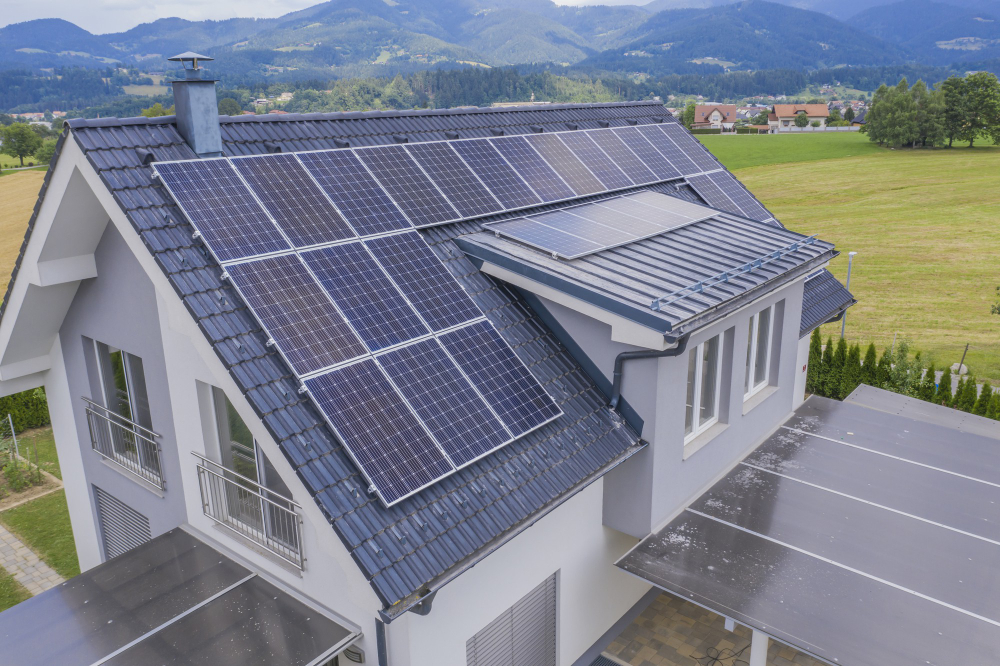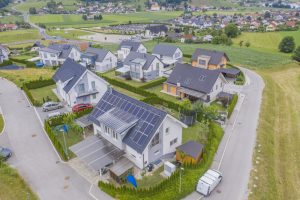The Energy Efficient Mortgage Programme
EEMP, or Energy Efficient Mortgage Programme, is a government initiative that makes getting solar panels easier by lowering upfront costs and monthly electricity bills, helping homeowners realise a return on their investment within several years of purchasing solar panels.
Another fantastic benefit of this programme is that it enables homeowners to take advantage of the Residential Renewable Energy Tax Credit. This incentive allows individuals to write off 30% of the cost of installing solar on their federal income taxes; this can significantly cut initial costs when going solar for homeowners with lower incomes and those in rural areas.
The Department of Energy provides several grants for solar panels and incentives to encourage people to go solar, such as the Homeowners Tax Credit, Solar for All programmes, and Solar Market Development Tax credits. Many states also offer rebates and incentives, such as New Jersey’s Successor Solar Incentive Programme, Texas community solar subscription programmes, and California’s solar tax credit and panel rebate.
The USDA’s REAP programme offers loans and grants to farmers, rural business owners, and communities for renewable energy projects such as installing solar power systems or making energy efficiency upgrades. It even covers costs related to battery storage systems needed in such endeavours.
The Residential Renewable Energy Tax Credit
As one of the main barriers to home solar energy is cost, the Residential Renewable Energy Tax Credit offers homeowners an invaluable way to offset these expenses and contribute towards creating a more eco-friendly world. This programme is an outstanding initiative that will allow them to save both in energy costs over time and in their carbon footprint in doing so.
New York homeowners, for instance, can take advantage of state rebates on solar panels that can reduce upfront costs by 20% and can be combined with the federal Investment Tax Credit to maximise returns. Furthermore, programmes exist that enable owners of home solar systems to “sell back” any excess energy they generate back to utility companies to earn credits on future bills; this process is known as net metering.
State and local grant programmes also offer financial support to homeowners looking to install home solar systems, helping with upfront costs or even covering entire costs altogether in some instances. Grants may be available from local governments, utilities, and even some nonprofit organisations.
Many grant programmes impose various criteria that must be fulfilled to qualify, such as providing evidence of financial viability and technical specifications about the project while adhering to any specific guidelines or rules that might exist.
The Department of Energy
Solar panels can help save you money on energy costs, protect the environment, and stimulate the economy, but installation costs can be prohibitively high. That is why there are government grants available to offset some of these expenses.
The Department of Energy provides grant programmes to support different kinds of energy projects, with solar grants targeted towards low-income households, schools, and businesses, as well as farms, tribes, and non-profit organisations.
To apply for a government grant, it’s necessary to submit a detailed project proposal that meets all required specifications; this could involve showing financial viability, technical specifications, and outlining environmental and social benefits for your project. In order to increase your chances of success in applying for grants from government websites, industry publications, or professional networks,.
DSIRE, or the Database of State Incentives for Renewables and Efficiency, is an invaluable resource to locate state and local solar grant programmes as well as non-grant support such as tax incentives and loans. Furthermore, this website regularly updates itself to reflect any new solar funding options.
The USDA
Sourcing government grants for solar panel installation costs can make solar energy an affordable option for homeowners. To take full advantage of such grants, homeowners should regularly monitor government websites, industry publications, and professional networks for opportunities that align with their project. It is also crucial that homeowners remain up-to-date with the application procedures and requirements of various grant programmes.
The USDA provides several energy efficiency and renewable energy grant programmes, such as REAP (Rural Energy for America ogram). This grant covers up to 50% of installation costs, making it perfect for farmers and rural businesses to reduce energy bills while taking advantage of solar power’s many advantages. REAP is open to anyone receiving federal food assistance, such as SNAP or HEAP benefits.
Rural and low-income households have seen great benefits from solar investment incentives like the 30% Solar Investment Tax Credit; however, the costs of installing large solar panel systems may still be prohibitive for some families. To help ease this barrier to investment in residential solar, the USDA has launched the Solar for All grant competition in an effort to encourage communities to invest in residential solar. The winning community will receive funding to expand existing low-income solar investments or launch new programmes.


